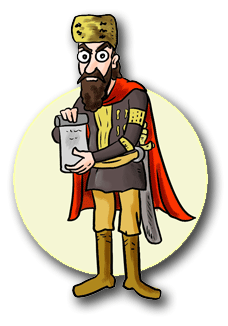Doctor Numenius of Heraclea
We can only find little historical data about Numenius. He used to be an ancient doctor who created two medical recipes for some health issues. One was for treating stiff joints, and the other one to be used as treatment for inflammation of the cervix.
He is mostly mentioned in the enormous “Dictionary of Greek and Roman Biography and Mythology” by William Smith. Smith is an English lexicographer and published this dictionary in London, 1870. There he states:
“Numenius, a medical writer, quoted by Celsus and Aetius (who refers to him as Nimius, not Numenius). He is a native from Heraclea and was a pupil of Dieuches. Probably lived in the 4th or 3rd century BC. He also had a poem on recreational activities like fishing; which Aetius likes to quote quite often. The Scholiast on Nicander quote a person of the same name who wrote on venomous animals…” (Smith, 1873)
Athenaeus, also known as Athenaeus of Naucratis, mentioned about 800 ancient authors in his work “The Deipnosophists” (meaning “Philosophers at Dinner”). Among them, he mentions Numenius around 28 times, in short segments. Once he states:
“…Numenius of Heraclea, writer of a poem – banquet and pupil of Dieuches the physician.” (Athenaeus, The Deipnosophists, book 1)
From this quote we can conclude that Numenius; besides having an occupation as a doctor, also practiced writing poetry for organizations in the society. His teacher, Dieuches, lived in the 4th century BC and belonged to the medical sect of the Dogmatici. From this data we can determine that Numenius lived from the end of the 4th century BC till the half of the 3rd century BC. He also puts Numenius and Aristotle in the same context.
Athenaeus recalls Numenius as a zoologist and botanist in books 7 and 9 in “The Deipnosophists”. He claims that Numenius had his own book called “The Art of Fishing”; in which he described sea and freshwater fish and winter plants. The book is written in verse.
Because of that many treat it as a poem
Most significant information about Numenius left the author Aulus Cornelius Celsus. He was a doctor and wrote encyclopedist; and lived from the year 25 BC to the year 50 AD. He is the author of the capital work “De Medicina” (On Medicine). In this book texts about religion and spirituality, diets, surgeries, politics, as well as pharmacy dominate. There are many recipes about medicines in this book; among which, two appear to be Numenius.
That is a prove that Numenius had had written documents in the field of medicine. Apparently, those works are long lost. But in the time of Celsus; (which was 300 years after Numenius); they had still existed. Let’s have a look on what Celsus wrote about those recipes.
Doctor remedy for stiff joints
“Numenius cured gout and all cases of stiff joints with a custom made balm. The balm consisted: wormwood, poppy seed, dried rose leaves, 12 grams each. Next are 16 milliliters turpentine oil and frankincense and baking soda, 32 grams each. Also, iris and aristolochia, 48 grams each, 1 kilogram wax to which 42 milliliters cedar oil is added. Finally, 126 milliliters laurel oil and 500 milliliters of bitter olive oil.” (Celsus, De Medicina, book 5 chapter 18)
If we observe the drugs which Numenius used to prepare this curative emollient, we can notice something smart. As a matter of fact, nowadays there are scientific proves that these drugs contain useful substances. All of them possess combinations of analgesic, anti-inflammatory, astringent, antiseptic and spasmolytic effects.
The base of this cream is made of wax and bitter olive oil. These ingredients possess unsaturated fatty acids that contribute to the emollient effect on the spot of application (the skin).
Medicament for inflammation of the cervix
The second recipe is prepared in the form of suppositories. Numenius recommended it for vaginitis and other vaginal disorders. Celsus thought this was the best medication for such purpose. We can assume Numenius was a really successful doctor based on Celsus’ opinion.
“For inflammations of the womb, the Numenius’ mixture consists of: 1 gram saffron, 4 grams wax and 32 grams butter. Also, 48 grams goose fat, 2 boiled yolks and less than 40 milliliters rose oil.” (Celsus, De Medicina, book 5 chapter 21)

In conclusion, we can easily determine that Numenius was a great doctor. Most of all, because his medications have scientifically confirmed compounds that have great impact on the given diagnosis.
Click here to go to the next post; which is all about Doiran Lake and It’s Healing Health Power.


